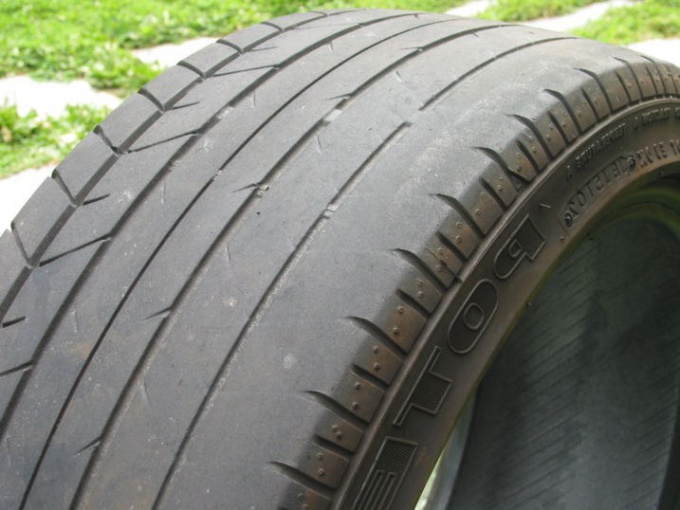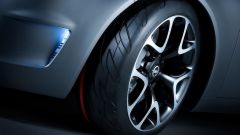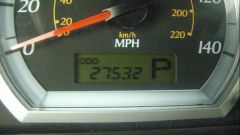Instruction
1
Leading tire manufacturers usually specify the rate of mileage to each of the models. This is a different value, and they are very relative. A lot depends on the quality of the source material, the condition of the road surface, driving style etc. This method of determining the wear of rubber is widespread, but it is not the best because of the uncertainty of the outcome.
2
Pay attention to the wear indicators – TWI (Tread Wear Indicator). They are installed by manufacturers of many brands of tires. Usually the indicators are a narrow strip between the tread blocks. For its detection should carefully inspect the sidewall. Try to see either the brand name of the manufacturer, or the arrow, or letter. If the indicator is in contact with the road (seen right), replace the tire.
3
Explore the depth of the profile. Experienced drivers determine the rate at eyes, the other with a ruler. The critical tread depth is considered to be 1.6 mm for summer tyres and 4mm for winter. Better not to bring the tires up to these minimum marks, since they already almost do not provide adhesion with the road. You are wise to change the tires earlier.
4
Stock up on foreign and domestic coins. Cheerful and resourceful motorists are used to determine the tire wear American 1-dollar coin, which depicts George Washington. Follow their example: in the groove of the tread, insert a coin to the top of the head of the President facing down. If the hair ends Washington's visible, it's time to change tires, if not visible, the tires will serve you.
If you had only a penny with a picture of Lincoln, and be content with them. If inserted in the groove of the tread of the coin the head of Lincoln is visible, then most likely it is time to change the tires on new.
In your pocket is ringing only domestic change? It doesn't matter. Take the 2-ruble coin, and do it with the procedure described above. The eagle head must be at the bottom. If the top of the proud bird is seen on the surface of the tread, the tire still will serve you. But if it is at least partially immersed in the groove, your tires should be replaced.
Despite the apparent futility of this method, it accurately shows the degree of tire wear. By resorting to this method many motorists.
If you had only a penny with a picture of Lincoln, and be content with them. If inserted in the groove of the tread of the coin the head of Lincoln is visible, then most likely it is time to change the tires on new.
In your pocket is ringing only domestic change? It doesn't matter. Take the 2-ruble coin, and do it with the procedure described above. The eagle head must be at the bottom. If the top of the proud bird is seen on the surface of the tread, the tire still will serve you. But if it is at least partially immersed in the groove, your tires should be replaced.
Despite the apparent futility of this method, it accurately shows the degree of tire wear. By resorting to this method many motorists.
Useful advice
Check the tires for wear at least once during the month. After all, the eternal rubber has not yet been invented, and expose themselves and their passengers risk not worth it.



